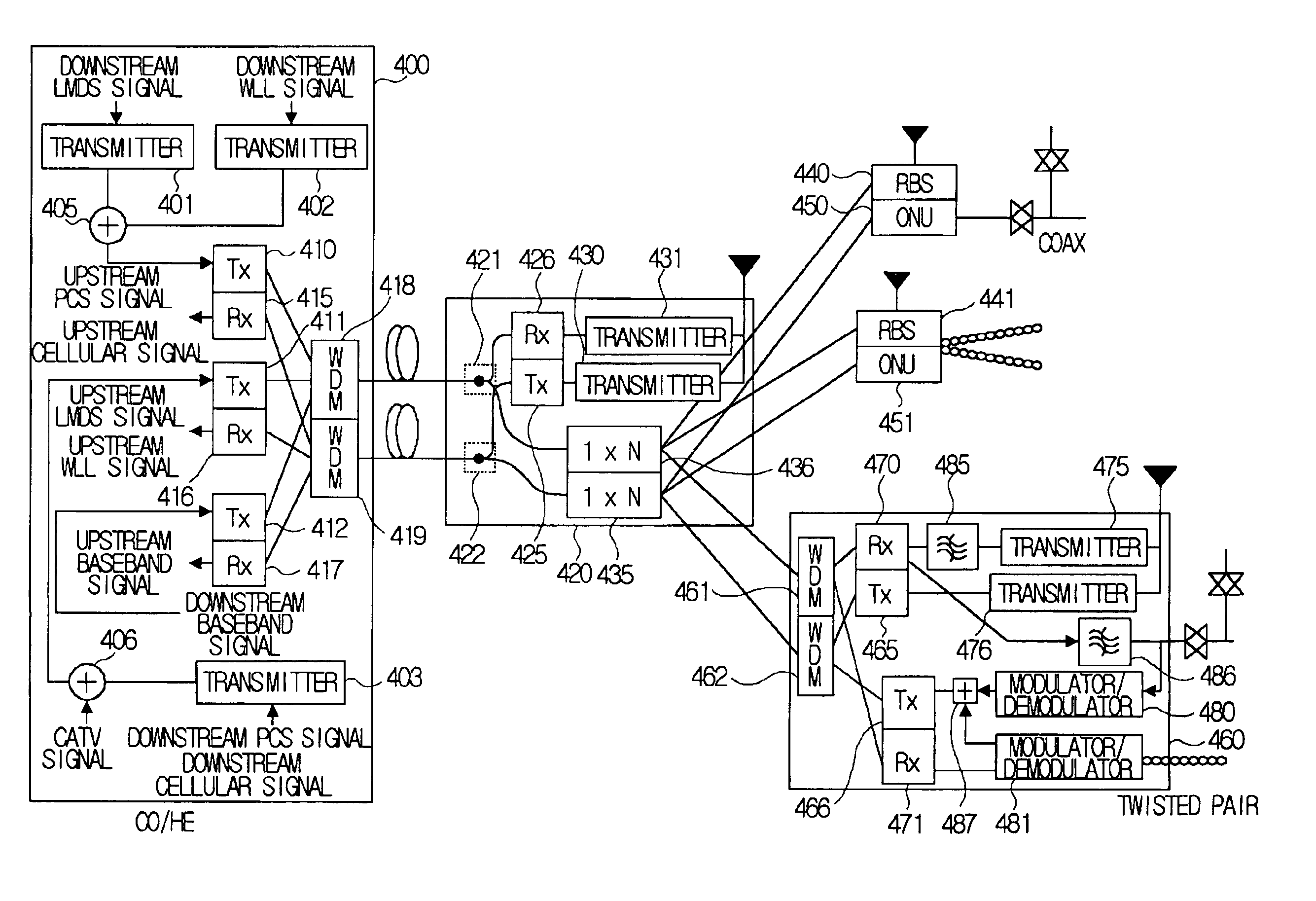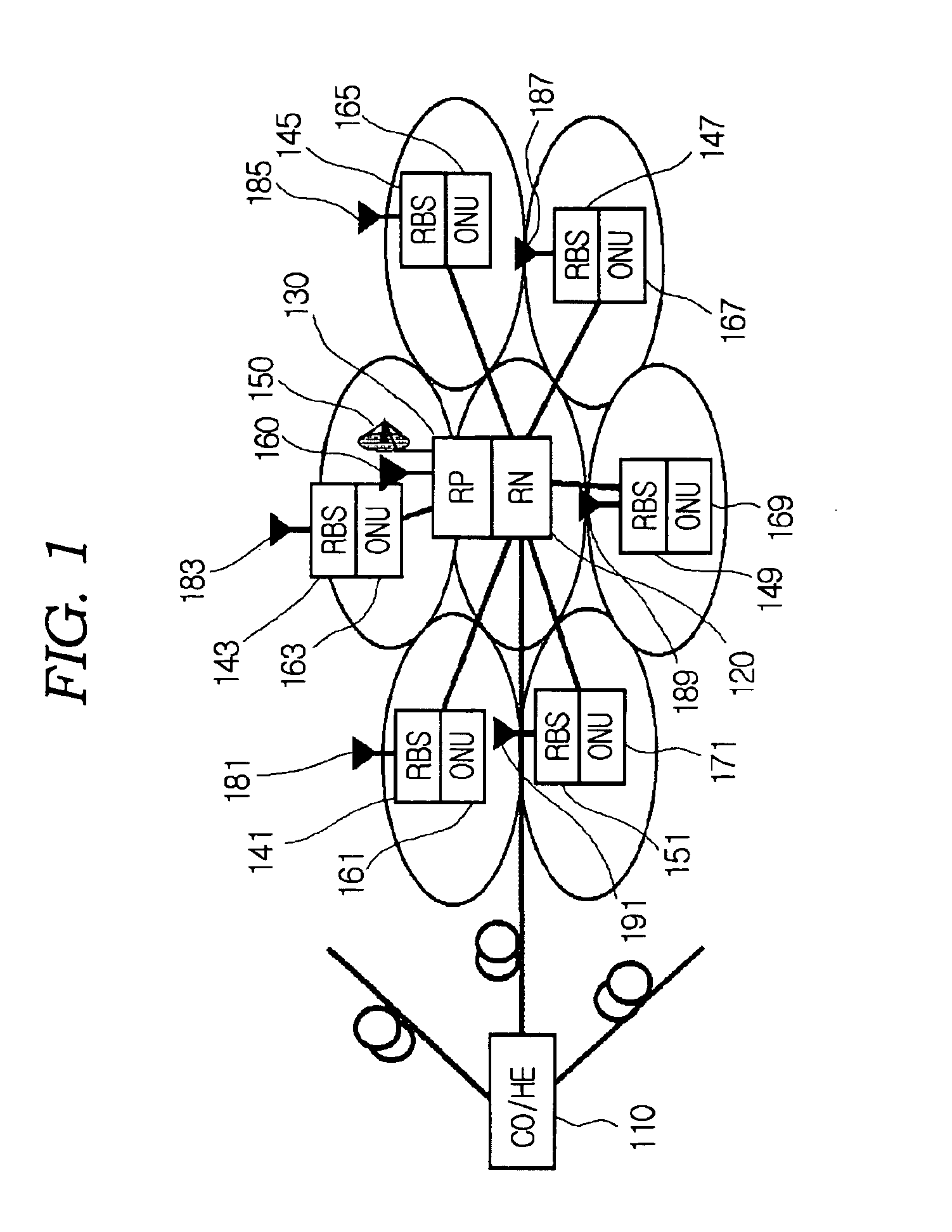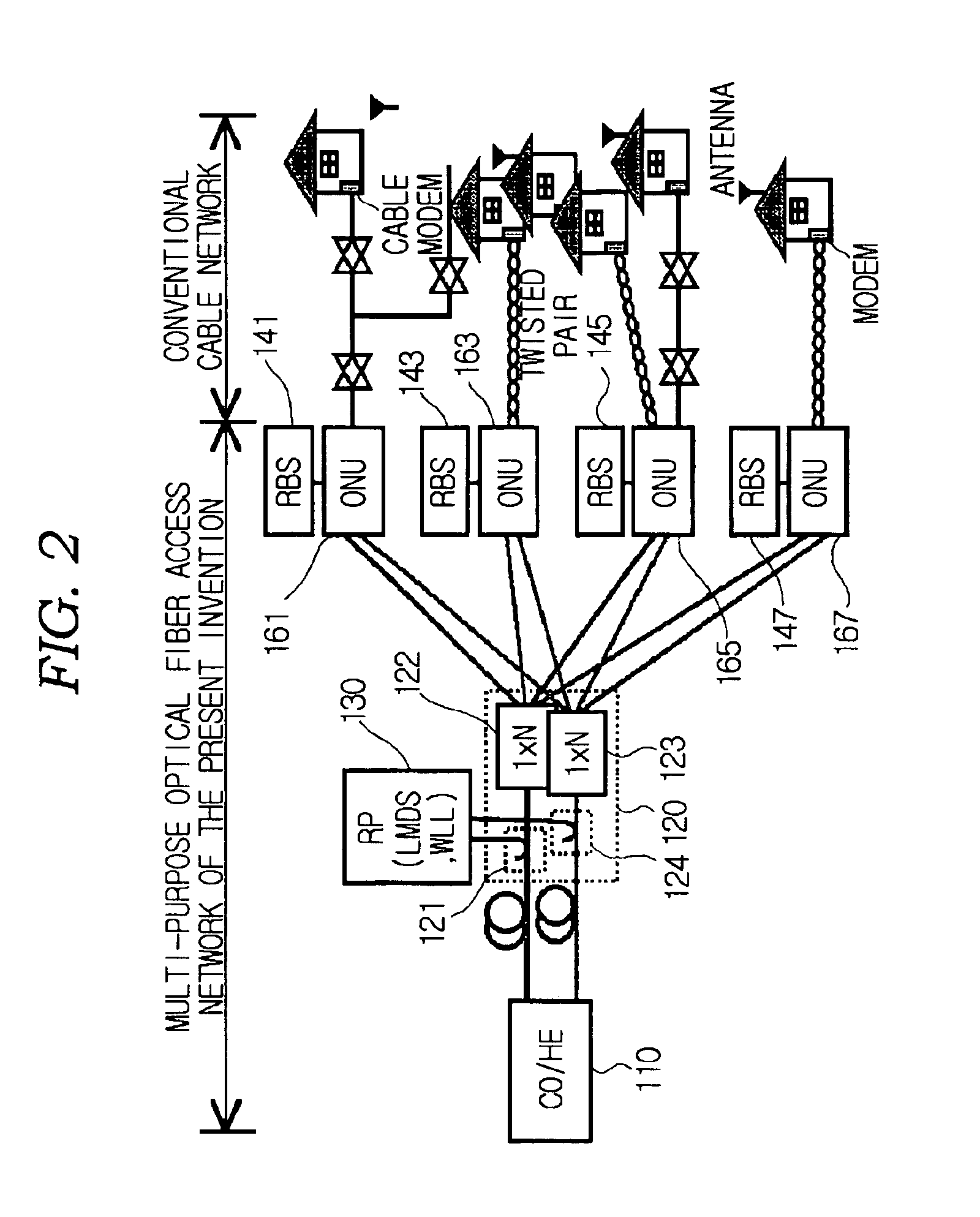Multi-purpose optical fiber access network
a multi-purpose, optical fiber technology, applied in the direction of multi-plex communication, wireless communication, wavelength-division multiplex system, etc., can solve the problem of difficulty in building an economical access service network
- Summary
- Abstract
- Description
- Claims
- Application Information
AI Technical Summary
Benefits of technology
Problems solved by technology
Method used
Image
Examples
first embodiment
[0104]FIG. 4 is a node block compositional drawing of a multi-purpose optical fiber access network according to the present invention. FIG. 4 shows the case of being composed by using three wavelengths.
[0105]If each wavelength are allocated to each access, the independency of each access service is guaranteed. However lots of light sources are needed to that extent and complicated technology such as wavelength stabilization is also needed. Therefore the construction of economical access network is difficult.
[0106]For the construction of economical access network, the embodiment is the case that provides said access service with three wavelengths by using the first allocated wavelength for LMDS service and WLL service, the second allocated wavelength for CATV service and PCS service and the third allocated wavelength for data service.
[0107]First, in downstream transmission for LMDS service and WLL service wavelength of 1.3 μm, for CATV service and PCS service wavelength of 1.53 μm, a...
second embodiment
[0126]FIG. 5 is a node block compositional drawing of a multi-purpose optical fiber access network according to the present invention. FIG. 5 shows the case of being composed by using five wavelengths.
[0127]The LMDS signal and WLL signal use the same light source and the CATV signal and downstream PCS signal use the same light source in the first embodiment of FIG. 4. Also, the upstream data signal such as the ADSL upstream service and cable modem service uses the same light source in the FIG. 4. From the embodiment of FIG. 4, there is disadvantage that the independency between several access services is not guaranteed.
[0128]The embodiment of FIG. 5 complements the disadvantage by adding two wavelengths.
[0129]In upstream transmission of signal for transmission of LMDS signal wavelength of 1.56 μm, for transmission of WLL signal wavelength of 1.58 μm, for transmission of PCS signal wavelength of 1.54 μm, for transmission of CATV signal wavelength of 1.3 μm and for transmission of dat...
third embodiment
[0142]FIG. 6 is a node block compositional drawing of a multi-purpose optical fiber access network according to the present invention. For LMDS and WLL service one wavelength is allocated, for CATV and PCS service another wavelength is allocated and for transmission of data signal several wavelengths are allocated.
[0143]The difference between the embodiments of FIG. 4 and FIG. 6 is that data signal is transmitted to optical network units 650, 651, 660 by wavelength division multiple access. Accordingly, the central office / headend should equip with N light sources of different wavelengths in order to transmit data signal to N optical network units and each optical unit should equip with wavelength selected distributed feedback laser as light source for transmission of upstream data signal.
[0144]For example, in downstream signal transmission, for LMDS and WLL wavelength of 1.53 μm, for CATV and PCS wavelength of 1.3 μm, and for transmission of data signal wavelength of 1.55 μm is used...
PUM
 Login to View More
Login to View More Abstract
Description
Claims
Application Information
 Login to View More
Login to View More - R&D
- Intellectual Property
- Life Sciences
- Materials
- Tech Scout
- Unparalleled Data Quality
- Higher Quality Content
- 60% Fewer Hallucinations
Browse by: Latest US Patents, China's latest patents, Technical Efficacy Thesaurus, Application Domain, Technology Topic, Popular Technical Reports.
© 2025 PatSnap. All rights reserved.Legal|Privacy policy|Modern Slavery Act Transparency Statement|Sitemap|About US| Contact US: help@patsnap.com



